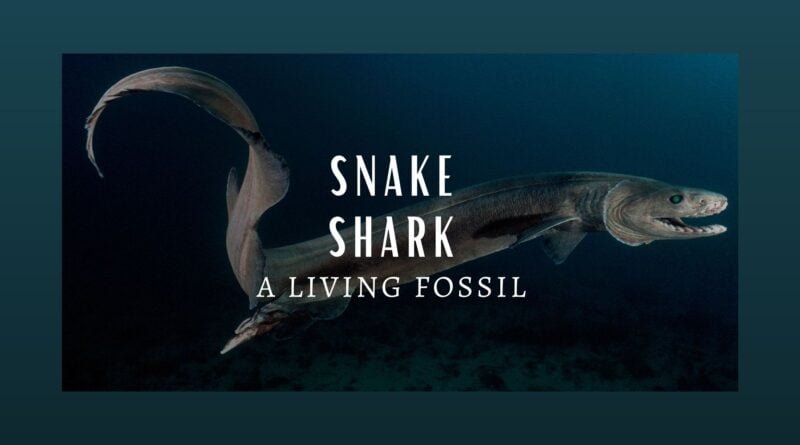All about the snake shark: a living fossil
Did you know that there are species out there that are so old and so primordial that they are known as “living fossils”? These species look very similar to ancient species that are known only as fossils in the present day. One prime example of such a species is the frilled shark, which is also known popularly as the snake shark. The normal frilled shark and the Southern African frilled shark are the only extant species of the Chlamydoselachidae family.
Discovery & Identification
First discovered off the coast of Japan in the 1880s by German zoologist Ludwig Doderlein, the frilled shark was classified as a discrete species of shark. The family lineage of the snake shark dates back to the Carboniferous period, which was more than 360 million years ago. This is one of the primary reasons why the snake shark is called a “living fossil”. The Snake sharks can be found off the coast of Japan, Australia and New Zealand.

Appearance of the Shark
The frilled shark is also known as the snake shark because of its reptilian and primordial appearance. The shark has an eel-like body which distinguishes it from other forms of sharks. It also has a very different kind of jaw structure, which is known by ichthyologists as amphistyly. The jaws of the snake shark are flexible and powerful, and contain around 300 sets of teeth. These sharks can be almost 6 feet in length as well.
Habits & Characteristics of the Snake Shark
The discovery of the snake shark took so long because of two reasons. First, its strange and frightening appearance led fishermen off the Japanese coast to think it was some kind of beast or monster. Secondly, the snake shark is a species that prefers to stay close to the ocean floor. However, scientists have discovered that the sharks practice “vertical migration”, where they swim up to the surface at night in search of prey.
Scientists have discovered that the frilled shark survives on a diet of small bony fish, smaller sharks, and cephalopods. 60% of their diet actually consists of varieties of squid that can be found in the Pacific. Other discoveries have shown that the snake shark also chooses to feed on smaller and weaker sharks, such as the Japanese catshark. The flexible jaws of the snake shark are very powerful, and the shark can make full use of its coiled eel-like body.

Reproduction & Breeding of the Snake Shark
Strangely, the snake shark does not have a fixed breeding season. They live close to the floor of the ocean, where the seasons do not have any kind of effect. They are immune to all of it, so there are no fixed seasons for their reproduction. The snake shark is “ovoviviparous”, since the babies are born of an egg that stays inside the mother shark’s body. The gestation period can be 4 years long.
How Humans Interact With the Snake Shark
Throughout history, fishermen operating off the coast of Japan and Taiwan have come across the snake shark from time to time. This species is categorized as a “nuisance fish” since it tends to damage fishing nets and equipment. Typically, the frilled shark is caught in fishing nets off the Japanese coast that are intended for sea bream, gnomefish and shrimp. That’s why it is called a “bycatch” of most Japanese commercial fishing activities.
However, the shark has been hunted as well – since its meat is somewhat of a rare delicacy in Japan. Also, the byproducts of the meat processing have been used to make fish food as well. In 2016, the IUCN classified the shark as an extinction-risk due to many reasons. First of all, a rise in commercial fishing had depleted their food sources and encroached upon their habitats. Also, these snake sharks have a very slow rate of reproduction as well.

Population Estimate & Other Interesting Facts
- Scientists are currently unsure about the total number of frilled sharks. As the sharks live close to the ocean floor and have unpredictable periods of breeding, it is rather difficult for the marine biologists to know about the exact number of snake sharks alive today.
- As mentioned before, the snake shark has around 300 teeth, which are lined in 25 neat rows. These teeth are small and needle sharp, and are used by the apex predator to rip into its prey using a coiling motion. The eel-like body of the shark is also a factor.
- The family of the snake shark dates back to the Carboniferous age, and the frilled shark itself has probably populated the oceans of earth for 80 million years. It has a simple anatomy – yet it is very interesting to study.
Final Thoughts
This is all you need to know about the frilled shark or snake shark, which is one of the coolest and most interesting deep-sea animals in the world. It is a remnant of an era that’s long gone.




